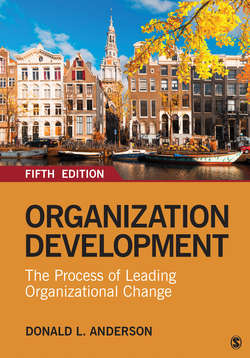Читать книгу Organization Development - Donald L. Anderson - Страница 51
Participation, Involvement, and Empowerment
ОглавлениеParticipation is perhaps the most foundational of OD’s democratic values. Recall the discussion of Likert’s participative management strategy described in Chapter 2. Participative management, and OD activities that support it, offer the ability for employees to contribute to the decision-making process and to have more control and autonomy over their work (Skelley, 1989). This value means that organizational members should be involved and included in decisions and organizational changes that impact them, because “people support what they help create” (Beckhard, 1969, p. 27; Wooten & White, 1999, p. 11). Schein (1990a) writes that the essence of OD is “that change in human systems will not come about without the active involvement of the members of the system who will undergo the change” (p. 16). Change, in this respect, is not imposed on a group or demanded of an individual. Instead, the practitioner’s charge is to help the organization develop and manage the change that it seeks to create, giving the opportunity for participation and thereby transitioning ownership to organization members. Creating occasions for participation in decision making means giving employees a choice to contribute (for example, to offer an opinion or to express a perspective) but stops short of mandating it. Providing opportunities for involvement and participation does not necessarily mean that all organizational members will be enthusiastic about the outcome, but it does mean that they will have had an opportunity to express an opinion and potentially to shape it. In this respect, participation is a very important aspect of organizational members’ being able to express themselves and achieve personal fulfillment through membership.
Table 3.2
Participation is not, however, a silver bullet to eliminate all organizational problems. As Pasmore and Fagans (1992) argue, “One cannot conclude based on any reasonable review of the literature . . . that simply involving people in decision making will produce positive benefits to either those involved or the organization as a whole” (p. 378). Instead, more complex factors are at play. Organizational members may not be prepared or trained to participate. For example, inviting employees to solve complex problems may not be effective if they do not have the skills to do so. Moreover, participation can be a risky prospect in many organizations, where members can feel suspicious of being asked to step outside of long-held hierarchical patterns. This is true particularly since organizations have not created the conditions in which members can participate competently, as Argyris (1957) noted a half-century ago. Characteristics of organizational structure (e.g., a tall organization), relationships (e.g., expectations of who may participate given what status), and societal expectations (e.g., values of not being confrontational or oppositional) all inhibit an individual’s choice to participate (Neumann, 1989). Finally, increasing participation can actually be detrimental to members if it is not authentic. Organizational leaders must not choose to involve employees solely for symbolic reasons. Instead, they must develop an environment in which authentic participation is possible and organizational members can have a legitimate impact.
